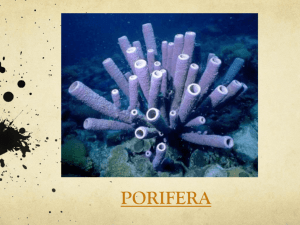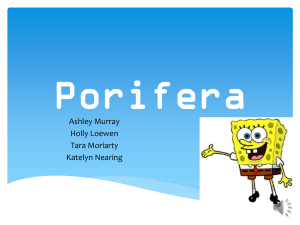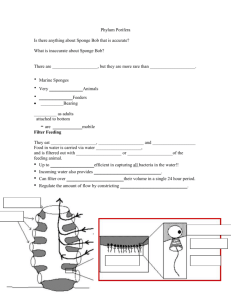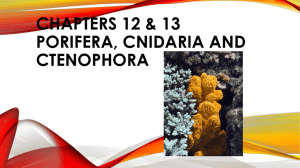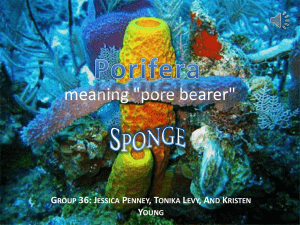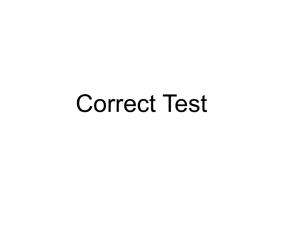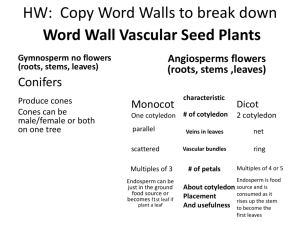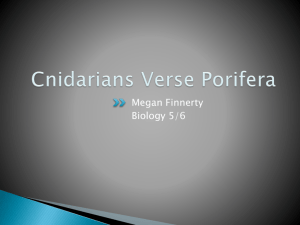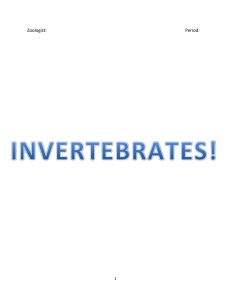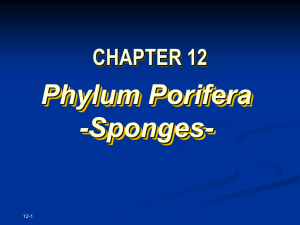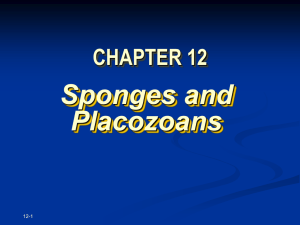Name: Fall 2013-2014 Aquatic Science Semester Exam Review
advertisement
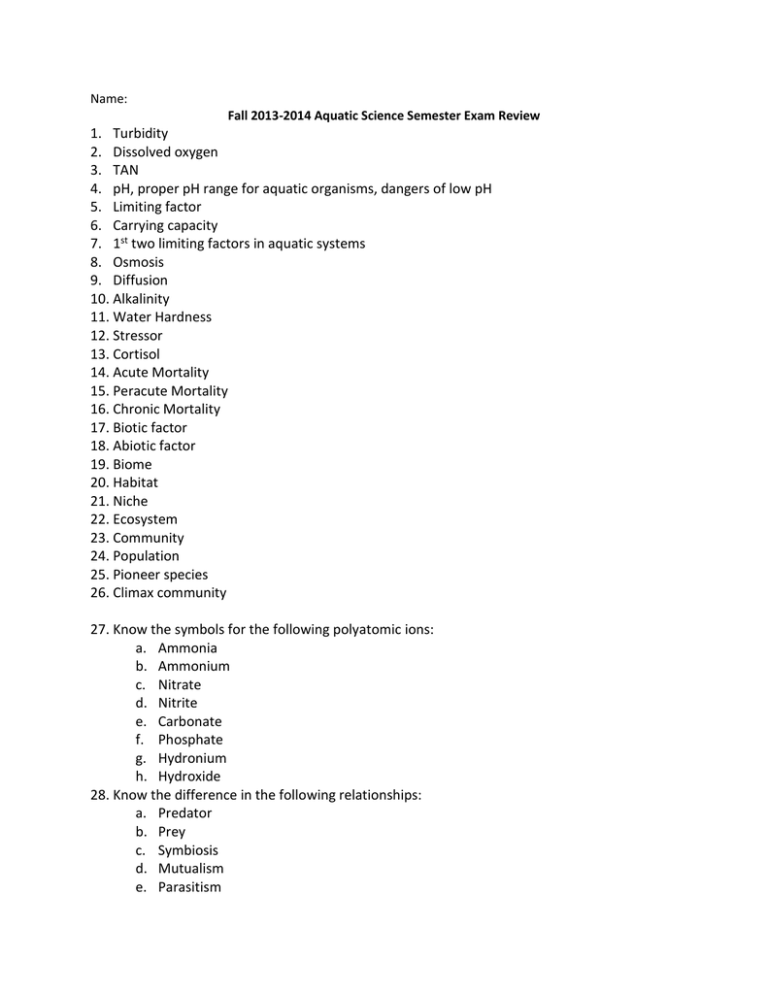
Name: Fall 2013-2014 Aquatic Science Semester Exam Review 1. Turbidity 2. Dissolved oxygen 3. TAN 4. pH, proper pH range for aquatic organisms, dangers of low pH 5. Limiting factor 6. Carrying capacity 7. 1st two limiting factors in aquatic systems 8. Osmosis 9. Diffusion 10. Alkalinity 11. Water Hardness 12. Stressor 13. Cortisol 14. Acute Mortality 15. Peracute Mortality 16. Chronic Mortality 17. Biotic factor 18. Abiotic factor 19. Biome 20. Habitat 21. Niche 22. Ecosystem 23. Community 24. Population 25. Pioneer species 26. Climax community 27. Know the symbols for the following polyatomic ions: a. Ammonia b. Ammonium c. Nitrate d. Nitrite e. Carbonate f. Phosphate g. Hydronium h. Hydroxide 28. Know the difference in the following relationships: a. Predator b. Prey c. Symbiosis d. Mutualism e. Parasitism f. Commensalism 29. Name two types of life that remove ammonia from an aquatic system. 30. Write out a general nitrogen cycle 31. Be able to label the fins on a fish as well as anterior, posterior, dorsal and ventral. 32. What is a lateral line and where is it generally located. 33. Placoid scales, ganoid scales, cycloid scales, ctenoid scales 34. What is the earliest known fish? 35. Why do fish have fins? Gills? 36. Know the difference in fish eyes and how it related to the depth of the water they thrive in. 37. Know the symptoms of the following diseases: a. Ick b. Flukes c. Dropsy d. Swim bladder disease e. Slime Disease f. Hole-in-the-head Disease g. Fin rot h. Pop-eye 38. 39. 40. 41. 42. 43. 44. 45. 46. 47. 48. 49. 50. 51. 52. 53. 54. 55. 56. 57. 58. 59. 60. 61. 62. 63. Oceanography – Earliest Recorded Sea Voyage – Phoenicians – Polynesians – Greeks – Pytheas – Eratothenes – Leif Eriksson – Christopher Columbus – Ferdinand Magellan – Shift in Reasons for Ocean Voyages (18th Century) – Ben Franklin & the Gulf Stream – Charles Darwin – The Rosses & Edward Forbes – Polar Oceanography & the Fram – Plate Tectonics – Deep Sea Submersibles – Jacques Cousteau – Kingdom vs. Genus species – Plankton – Nekton – Benthos – Phytoplankton vs. Zooplankton – Mero/holoplanktonic – Distribution of species on Earth – Adaptations for: a. Density/viscosity of water – b. Appendages – c. Surface area – d. Variations in temperature – e. Variations in salinity – 64. Hypertonic – 65. Hypotonic – 66. DO & depth of water – 67. Adaptations for water’s transparency: a. Transparency – b. Camouflage – c. Countershading – d. Chromatophores – e. Deep scattering layer – 68. Pelagic – 69. Benthic – 70. Epipelagic – 71. Mesopelagic – 72. Bathypelagic – 73. Abyssopelagic – 74. Hadal – 75. Euphotic – 76. Disphotic – 77. Aphotic – 78. Coastal Waters – 79. Estuaries – 80. Lagoon – 81. Coastal wetlands – 82. Pollution of coastal waters – 83. Petroleum pollution – 84. Sewage sludge – 85. DDT/Biomagnification – 86. Mercury/Minimata Disease – 87. Non-point-source pollution – 88. Oceanic garbage patches – 89. Plastic & the environment – 90. Important percentages associated with water – 91. Inorganic vs. Organic – 92. Hydrophilic vs. hydrophobic – 93. Alkalinity – 94. Carbonate buffering system – 95. Diatoms – 96. Euglena – 97. Paramecium – 98. Hydra – 99. Amoeba – 100. Biomass – 101. Species Richness – 102. Species Abundance – 103. 104. 105. 106. 107. 108. 109. 110. 111. 112. 113. 114. 115. 116. 117. 118. 119. 120. 121. 122. 123. 124. 125. 126. 127. 128. 129. 130. 131. 132. 133. 134. 135. 136. 137. 138. 139. 140. 141. 142. 143. Guild – Prime Niche – Biofilms – 3 benefits for bacteria in forming a biofilm – BOD – Prochlorococcus – Psychrophilic/tolerant – Barophilic/tolerant – Hydrothermal Vent – Nitrogen Cycle – Bioremediation – Xenobiotics – Phytoremediation – Chemical Cocktails – Oxygen depleting wastes – C:N:P ideal for bacterial growth – Cyanotoxins – TDS – Thermal Pollution – Nitrogen Fixation – Sources of Nitrates in water – Methmoglobinemia – DBPs – Trihalomethanes – Viruses – Bacteria – Protozoa – Helminths – E. coli – Fomite – Salmonella – Vibrio cholera – Giardia – Cryptosporidium – Toxoplasmosis – Platyhelminthes – Ashelminthes – Lung Fluke – Hookworms – Trichinella – Ascaris – 144. 145. 146. 147. 148. 149. Quadrant study & Sampling Population Resources for populations Population growth graphs Carrying capacity Predator vs. Prey Relationships 150. 151. 152. 153. 154. 155. 156. 157. 158. 159. 160. 161. 162. 163. 164. 165. 166. 167. 168. 169. 170. 171. 172. 173. 174. 175. 176. 177. 178. 179. 180. 181. 182. 183. 184. 185. 186. 187. 188. 189. 190. 191. 192. 193. Deforestation, Coral Bleaching, and loss of biodiversity Acid Rain CFCs Invasive species Lentic vs. Lotic Zones Color spectrum & its relationship to depth of water Intertidal zones Fresh water details Epilimnion Thermocline Hypolimnion Lake Overturn Oligotrophic Lakes Eutrophic Lakes Wetlands Roll of sponges in the ocean Mutualistic relationship of sponges Tissue of sponges Amebocytes Porifera defense mechanisms Medical use for sponges Chemical compounds that make up a sponge Porifera feeding, respiration and nervous system Porifera life cycle & mobility during each step Gemmules Reproductive cycle for Cnidarians Hydrostatic skeleton Endoskeleton Exoskeleton Asymmetry Radial symmetry Levels of organization in Porifera Choanocytes Water flow through a sponge Asexual reproduction Sexual reproduction Hermaphrodite Chemoreceptor Thigmoreceptor Photoreceptor Ocelli Statocyst Osculum Endoderm 194. 195. 196. 197. 198. 199. 200. 201. 202. 203. 204. 205. 206. Ectoderm Basal disk/foot GVC (gastrovascular cavity) Ostia Tentacle Incomplete vs complete digestive system Nematocyst Polymorphism Sessile Polyp forms of Cnidaria Neurotoxin Cnidarian level of organization, symmetry, habitat, feeding, respiration, reproduction Describe the nervous system or lack thereof in Cnidaria 207. Phylum: 208. 209. 210. 211. 212. 213. 214. 215. 216. 217. 218. 219. 220. 221. 222. 223. 224. 225. 226. 227. 228. 229. Water vascular system – Tube feet – Radial Symmetry – Bilateral Symmetry – Asymmetry – Endoskeleton – Radial ring & canal – Ambulacral groove – Ossicles – Echinoderm reproduction – Sea Star vs. Brittle star movement – Sea Urchins – Sea cucumbers – Respiratory tree – Crustaceans – Arthropod – Chitin – Isopod – % of known species that are arthropods – Crustacean anatomy – Cephalopod – Abdomen – Echinoderm Arthropod Mollusk 230. 231. 232. 233. 234. 235. 236. 237. 238. 239. 240. 241. 242. 243. 244. 245. 246. 247. 248. 249. 250. 251. 252. 253. 254. 255. 256. 257. 258. 259. 260. 261. 262. 263. 264. 265. 266. 267. 268. 269. 270. 271. 272. 273. 274. 275. 276. Telson Swimmeretes – Walking legs – Antenna – Mandibles – Claws – Exoskeleton – Molting – Hemolymph pump – Open circulatory system – Crustacean nervous system – Tactile Hairs – Statocyst – Thigmoreceptors – Chemoreceptors – Photoreceptors – Crustacean Reproduction – Gastropod anatomy – Decapod – HAM – Foot – Visceral mass – Mantle – Nacreous Layer – Duel function of gills – Radula – Nerve cord in mollusk – Evolutionary innovations in gastropods – Planospiral – Changes in the shell of gastropods – Cephalization – Torsion – Fouling – Coelom – Columella – Operculum – Spire – Body whorl – Aperture – Nutrition of gastropods – Bivalves – Adductor muscles – Cephalopods – Chromatophores – Specialization in feeding – Siphon – Cephalopod eyes & circulatory system –

